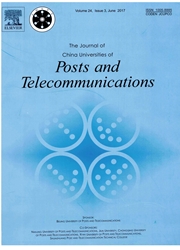

 中文摘要:
中文摘要:
最近,中等存取控制(MAC ) 协议招待因为特定的收音机网络被建议了解决隐藏的终端问题并且暴露了他们中的大多数没有考虑的终端问题 .However 在之间的相互作用物理(PHY ) 系统和 MACprotocol。因此,当前的 MAC 协议在有活动节点和褪色的隧道的网络是也低效的或在硬件困难实现。在这篇论文,我们在场当进直角的频率部门 Multiplexing (OFDM ) 系统的双忙音调多重存取(DBTMA ) 在 IEEE 802 求婚了,为集成一个媒介存取控制协议的特定的网络的新奇媒介存取控制称为。11a 标准。在纸介绍的分析显示 proposedMAC 计划超过 IEEE 802 完成表演改进。11 协议大约 25%~ 8 0% 特别在有高活动性并且深褪色的环境。建议计划的复杂性也比类似的忙音调答案的另外的实现低。而且,它与 IEEE 802 兼容。11a 网络。
 英文摘要:
英文摘要:
Recently, hosts of Medium Access Control (MAC) protocols for Ad hoc radio networks have been proposed to solve the hidden terminal problem and exposed terminal problem. However most of them take into no account the interactions between physical (PHY) system and MAC protocol. Therefore, the current MAC protocols are either inefficient in the networks with mobile nodes and fading channel or difficult in hardware implementation. In this paper, we present a novel media access control for Ad hoc networks that integrates a media access control protocol termed as Dual Busy Tone Multiple Access (DBTMA) into Orthagonal Frequency Division Multiplexing ( OFDM ) system proposed in IEEE 802.11 a standard. The analysis presented in the paper indicates that the proposed MAC scheme achieves performance improvement over IEEE 802.11 protocol about 25% -80% especially in the environment with high mobility and deep fading. The complexity of the proposed scheme is also lower than other implementation of similar busy tone solution. Furthermore, it is compatible with IEEE 802. 11a networks.
 同期刊论文项目
同期刊论文项目
 同项目期刊论文
同项目期刊论文
 A theoretical Method of Performance Estimate for Reed-Solomon Codes Concatenated Space-Time Block Co
A theoretical Method of Performance Estimate for Reed-Solomon Codes Concatenated Space-Time Block Co 期刊信息
期刊信息
